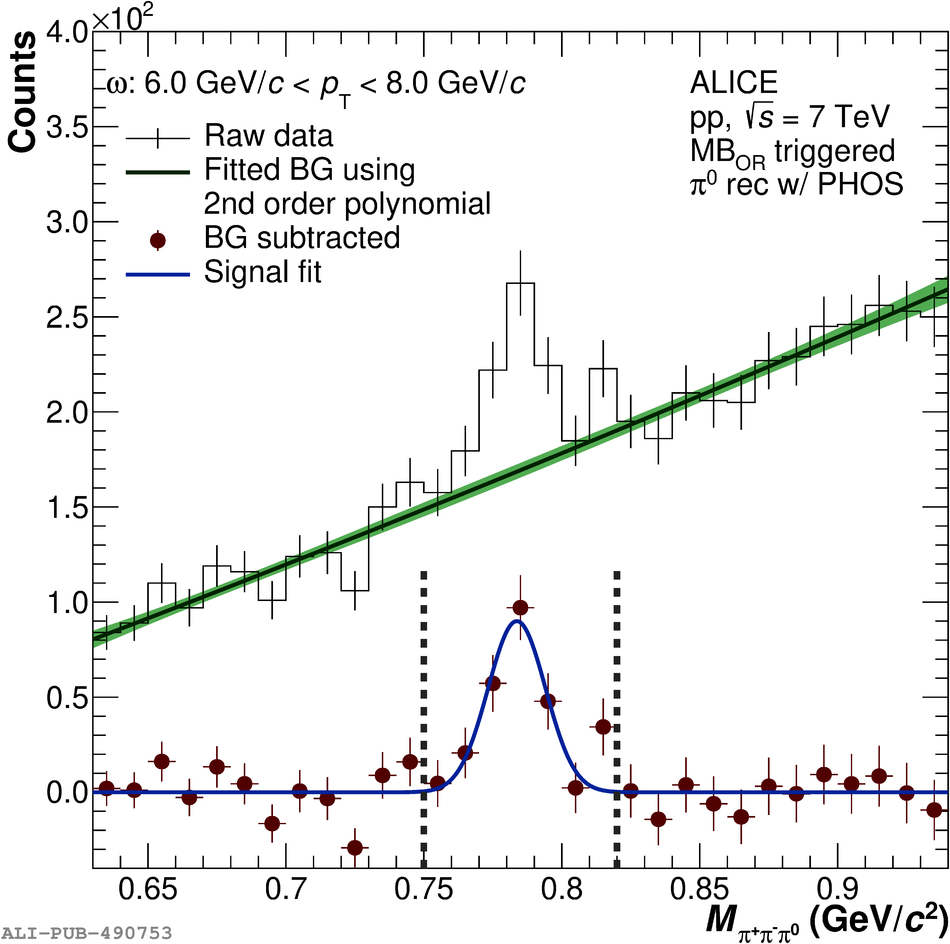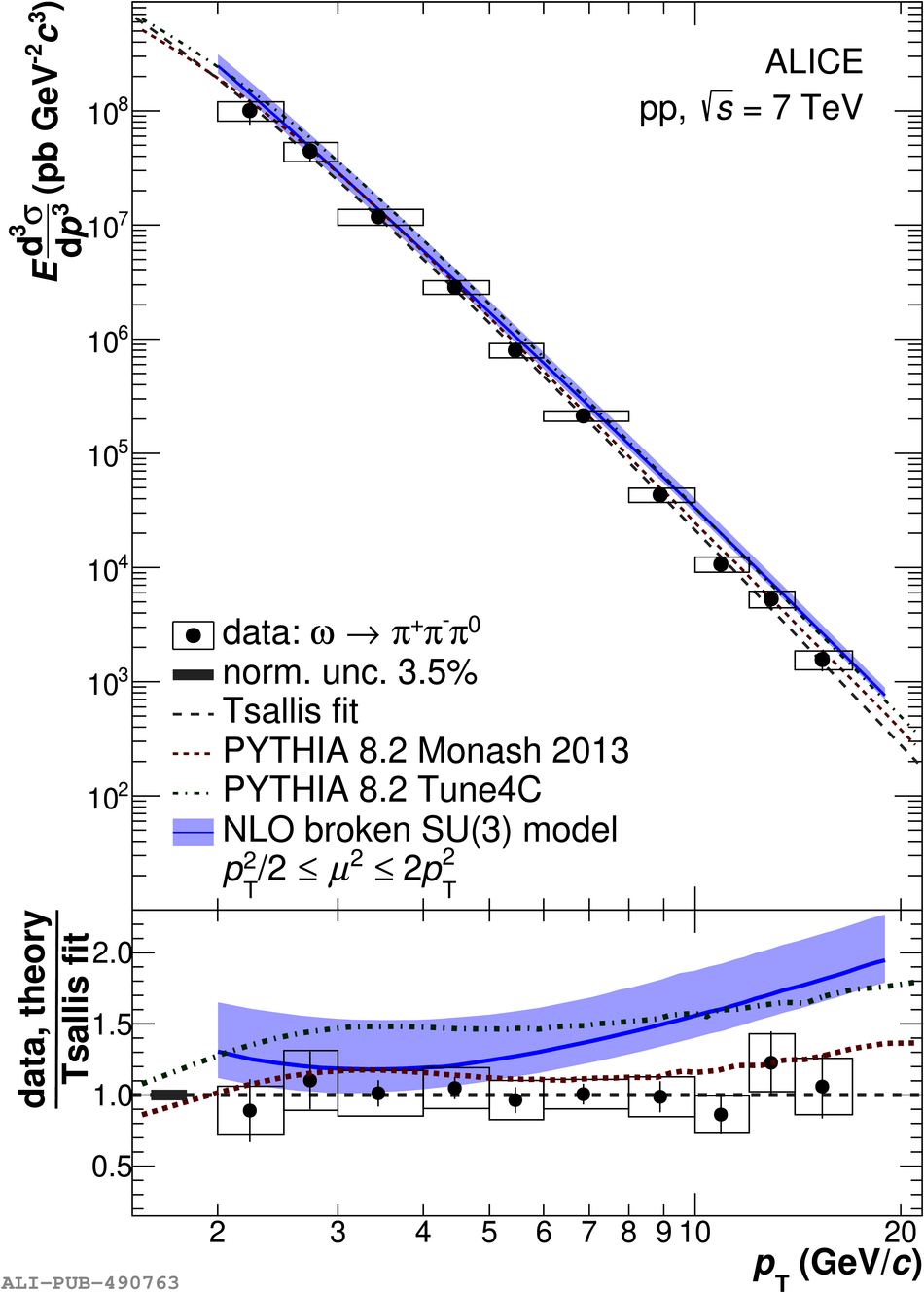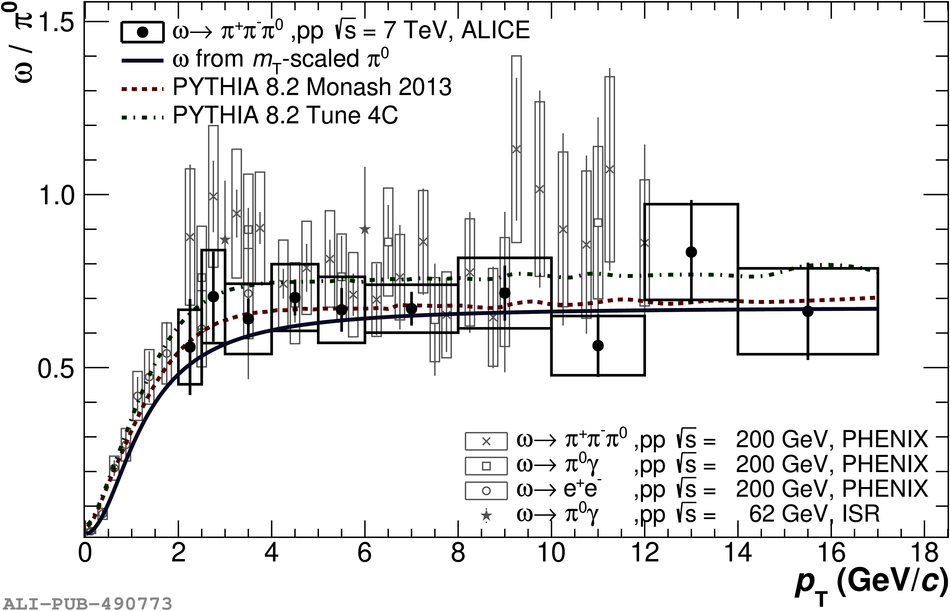The invariant differential cross section of inclusive $\omega(782)$ meson production at midrapidity ($|y|<~0.5$) in pp collisions at $\sqrt{s}$ = 7 TeV was measured with the ALICE detector at the LHC over a transverse momentum range of 2 <~ $p_{\rm{T}}$ <~ 17 GeV/$c$. The $\omega$ meson was reconstructed via its $\omega\rightarrow\pi^+\pi^-\pi^0$ decay channel. The measured $\omega$ production cross section is compared to various calculations: PYTHIA 8.2 Monash 2013 describes the data, while PYTHIA 8.2 Tune 4C overestimates the data by about 50%. A recent NLO calculation, which includes a model describing the fragmentation of the whole vector-meson nonet, describes the data within uncertainties below 6 GeV/$c$, while it overestimates the data by up to 50% for higher $p_{\rm{T}}$. The $\omega/\pi^0$ ratio is in agreement with previous measurements at lower collision energies and the PYTHIA calculations. In addition, the measurement is compatible with transverse mass scaling within the measured $p_{\rm{T}}$ range and the ratio is constant with $C^{\omega/\pi^{0}}$ = 0.67 $\pm$ 0.03 (stat) $\pm$ 0.04 (sys) above a transverse momentum of 2.5 GeV/$c$.
Eur. Phys. J. C 80 (2020) 1130
HEP Data
e-Print: arXiv:2007.02208 | PDF | inSPIRE
CERN-EP-2020-122
Figure group







